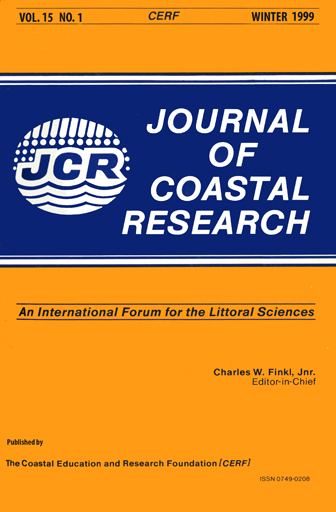Magnitudes, Spatial Extent, Time Scales and Causes of Shoreline Change Adjacent to an Ebb Tidal Delta, Katikati Inlet, New Zealand
Keywords:
Beach erosion, ebb tidal delta, tidal inlet, beach profiles, dispersion diagrams, principal components analysis, longshore transport, transport divergence, fall speed parameter, Southern Oscillation Index, coastal hazards .Abstract
The ebb delta and adjacent beaches at a mixed energy (tide dominated) inlet were monitored to identify the influence of the inlet/ebb-delta system on erosion and accretion of the adjacent beaches. Sub-aerial beach profile data were collected at 25 locations at monthly intervals over four years. Beach excursion distances and volumes, dispersion diagrams, principal components analysis and time-series correlations with wave parameters were used to extract the magnitudes, time scales, and causes of the beach changes. The divergence induced in the regional longshore transport regime by wave refraction over the ebb delta was also investigated. Changes on the adjacent benches beyond the wave shadow of the ebb delta and more than 3-4 km from the inlet centerline, were dominated by a quasi- annual signal which reflected cross-shore sand transport forced by storm waves . Lesser changes were linked with longshore transport which reversed its prevailing direction at inter-annual time scales. The longshore transport caused sand oscillation between the small headlands bounding the western beach, sand inputs to the inlet/ebb-delta system from the beaches either side, and a standing pattern of erosion and accretion about the inlet due to refraction-induced transport divergence. Immediately behind the ebb delta the quasi-annual storm-wave signal was either small or non-discernible against much larger, multi-year changes. The multi-year changes correlated with the longshore transport potential and were interpreted as being associated with scouring by the marginal flood-tidal flows, accretion of sand bars migrating shoreward from the ebb delta platform and flanks, and longshore transport divergence. Most of these changes appeared to be the on-shore signature of part of a cycle of sand circulation between the beaches and the ebb delta bars.Downloads
Published
1999-01-09
Issue
Section
Articles


